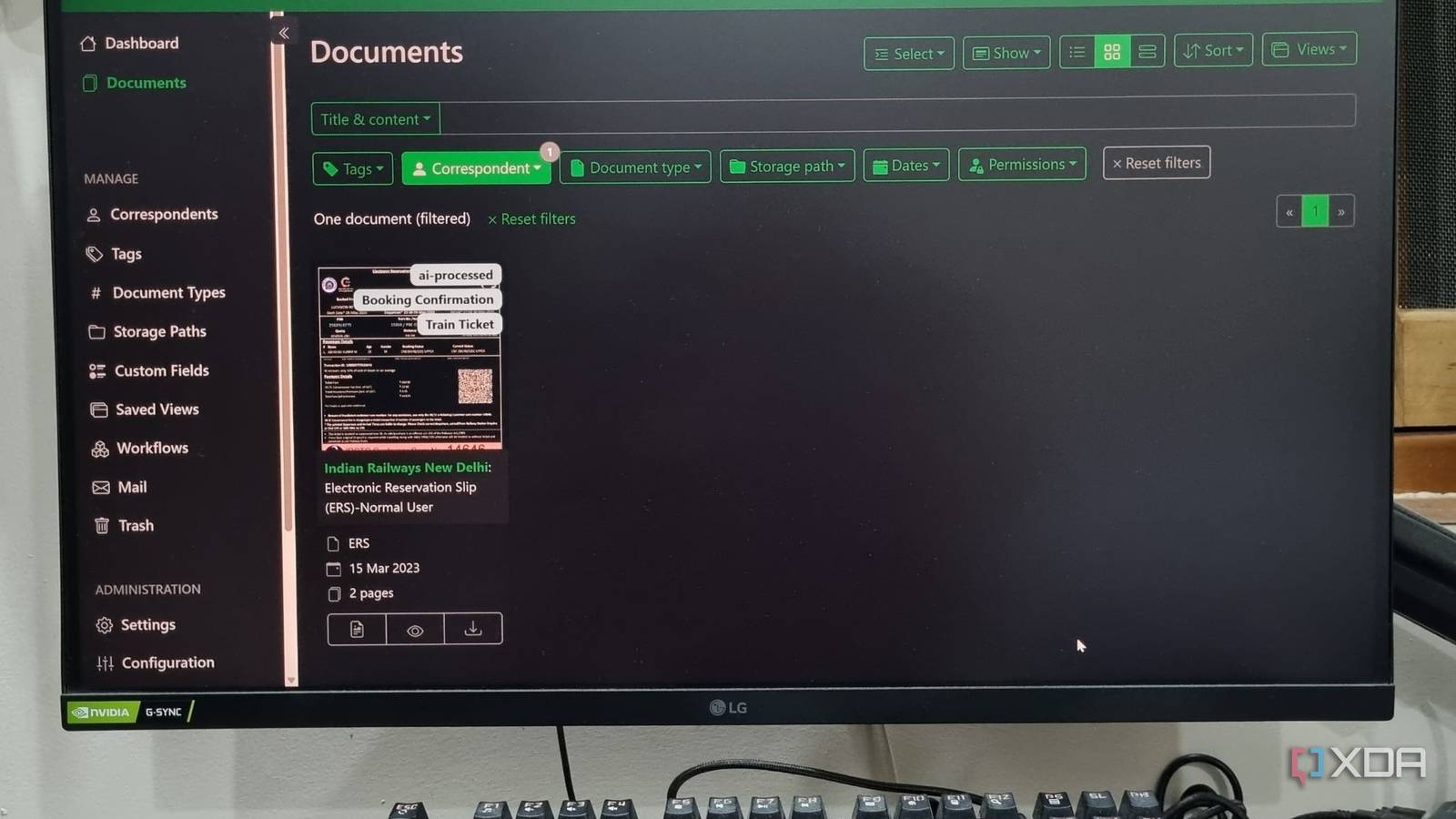Alex Kingston is opening up about her battle with cancer and the terrifying medical incident she experienced while on stage.
The “ER” and “Doctor Who” star, 62, revealed in an interview with The Independent published Oct. 10 that she completed…

Alex Kingston is opening up about her battle with cancer and the terrifying medical incident she experienced while on stage.
The “ER” and “Doctor Who” star, 62, revealed in an interview with The Independent published Oct. 10 that she completed…


A recent scientific study has revealed that the daily consumption of soft drinks can be harmful not only to physical health but also to mental well-being, as it disrupts the balance of gut bacteria, increasing the likelihood of depression,…
This request seems a bit unusual, so we need to confirm that you’re human. Please press and hold the button until it turns completely green. Thank you for your cooperation!

Paperless-ngx is a life-saving tool if you want to digitize and self-host all the documents, invoices, and receipts in a centralized store. I use it because I accumulate hundreds of purchases, documents, paperwork, contacts, quotations, and more…
This request seems a bit unusual, so we need to confirm that you’re human. Please press and hold the button until it turns completely green. Thank you for your cooperation!

The Oscal Tank 1…

Friday’s crypto sell-off was a fast, leverage-driven cascade that crushed altcoins while bitcoin held up comparatively better — and the next phase hinges on a handful of signals, according to Wiston Capital Founder Charlie Erith.
In a Sunday post titled “Crypto Crumble,” Erith said the market excluding bitcoin, ether and stablecoins fell about 33% in roughly 25 minutes on Oct. 10 before bouncing to a loss of around 10.6%. He added that about $560 billion, or 13.1%, has been erased from total crypto market value since Oct. 6 and cited $18.7 billion in liquidations during the episode.
He linked the immediate trigger to President Donald Trump’s Truth Social threat of an additional 100% tariff on Chinese imports, but argued the slide was already in motion — equities were still climbing while crypto “felt distinctly frail,” a divergence he took as advance warning.
Bitcoin, he said, “behaved largely as expected.” It fell, but less than the long tail, leaving bitcoin near a long-running uptrend from late 2022 and boosting its market share as non-bitcoin tokens absorbed “immense technical damage.” Erith said his fund emerged “largely unscathed” because positioning had already been defensively tilted.
Erith said he is tracking bitcoin’s 365-day exponential moving average as a line that separates bullish from corrective regimes. He added that a pullback toward the $100,000 area and a touch of that average would not, by itself, overturn his longer-term view provided the level holds — but a sustained break would raise the risk of a deeper reset.
He also pointed to market breadth via bitcoin’s share of total crypto value. According to Erith, the sell-off accelerated a rotation toward higher-liquidity assets, lifting bitcoin dominance. He said a continued rise in that share alongside weak breadth would argue for caution in high-beta tokens until non-bitcoin charts rebuild.
Beyond bitcoin’s own levels, Erith highlighted Strategy’s equity as a proxy for leverage and sentiment in the ecosystem. He noted that roughly four years ago a decisive move below its 365-day average preceded a major bitcoin drawdown. In his view, holding above that trend line would support the resilience narrative; a break below could foreshadow renewed selling pressure.
Volatility is the other gauge. Erith said the VIX — the equity “fear index” — has started to climb and that historically better entries arrive when volatility spikes rather than during the early rise. That framing implies patience on adding risk while equity-volatility stress plays out.
On positioning, Erith said he remains invested but is avoiding leverage and is carrying cash “waiting for the dust to settle.” He said moves of this sort have, in his experience, sometimes preceded broader downturns, which is why he prefers to see the above signals stabilize before increasing exposure.
Erith said the sell-off inflicted heavy damage on altcoins, while bitcoin’s month-to-date decline is modest and comparable to large-cap tech, which he views as evidence of growing resilience.

In recent remarks, John Ketchum, CEO of NextEra Energy, laid out a curious and somewhat baffling narrative: renewables should serve as a transition solution toward expanding natural gas generation. Yes, you read that correctly. After decades of framing gas as a so-called “bridge fuel” to a renewable future, the argument has seemingly flipped on its head. We are now being asked to consider the most rapidly deployable, clean, cost-effective energy sources — wind, solar, and storage — as nothing more than a stopgap solution until we can build more expensive, slower-to-deploy fossil-fuel infrastructure. This logic would be amusing if it weren’t deeply troubling.
“We need a bridge to get ourselves to 2032 when that gas shows up,” Ketchum said. “And when that gas shows up, it’s going to be three times more expensive than it’s ever been.
In his defence, Ketchum’s comments came during the Politico Energy Summit in Washington, D.C., in June 2025, where he was responding to mounting political pressure from Republican-led efforts to roll back clean energy incentives and reinstate…